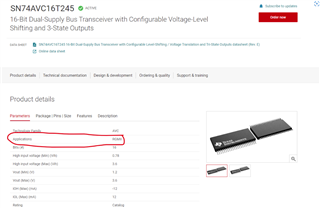Other Parts Discussed in Thread: SN74AVC16T245, SN74AVC8T245
We are using a 1.5V MAC that needs to be connected to a 3V3 PHY via a RGMII bus. We are planning to have a 1000Mbit/s connection via this RGMII interface.
We want to use the SN74AXC8T245 for this.
- Is the SN74AXC8T245 fast enough;
- Is the timing (delay) of the SN74AXC8T245 with in the specs for a RGMII Bus?
Thanks for your help.


